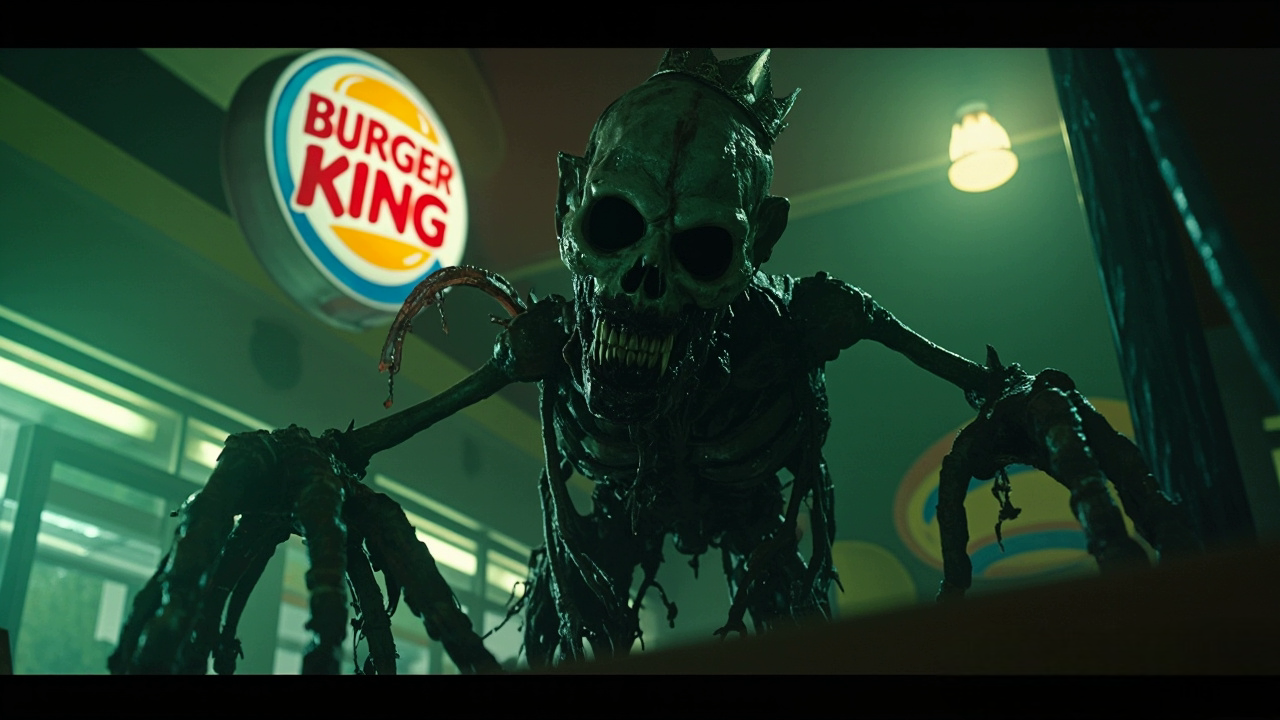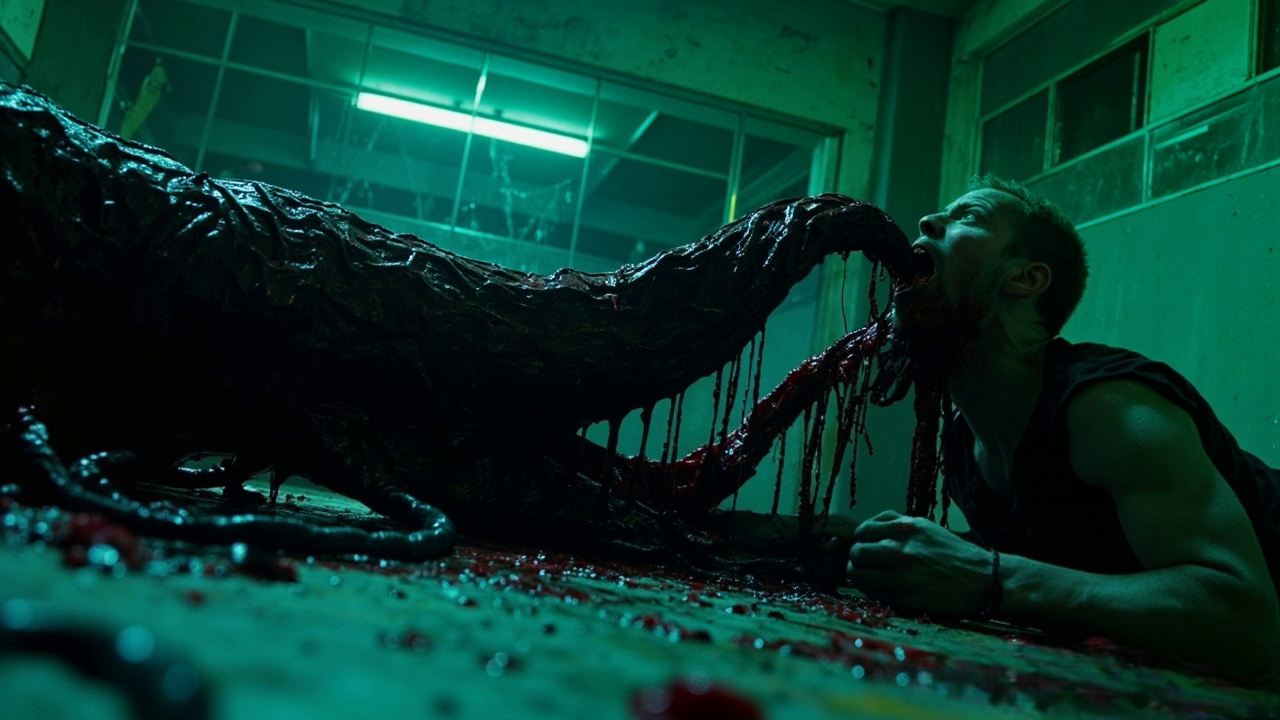
On a bleak October evening, Eleanor Marrow found the doll in a dusty antique store nestled behind a forlorn church. The shopkeeper, a pale old woman, offered it without a word. The porcelain face was cracked, one glass eye missing and replaced with a rusty nail. The mouth had been crudely stitched shut, red threads staining ivory-white porcelain. An aura of decay and menace clung like cobwebs.
Eleanor’s heart raced—not from fear, but from fascination. Painters’ hands, she thought, could restore it. The doll would be her centerpiece: an artfully creepy muse. She carried it home through late-night streets, ignoring the flickering streetlights and unnatural hush that followed her.
At home, she set the doll on her living room mantel beneath three candle sconces. Then, she lit them. The flames danced, casting grotesque shadows. And she whispered: Welcome, darling.
That night, Eleanor dreamed she saw the doll stand by her bed, one glass eye reflecting moonlight. She awoke to its cracked face inches from hers—cold porcelain resting against her fingers. The candle sconces were unlit. The doll’s missing eye socket was empty and black.
Startled, she jumped back. The doll sat poised, unblinking. Eleanor noticed fresh red stains at the stitches, as if the doll had been crying.
Brushing it off as a nightmare, she relit candles and left the doll facing the room. She told herself: You’re overworked. Sleep.
On night two, Eleanor heard faint whispers outside her bedroom door. Footsteps creaked on bare wooden floorboards.
She paused. That’s not possible. An open door stood between her and the living room. There, the doll lay slumped sideways, one glass eye gleaming in candlelight. In its stitched mouth, there was a slip of aged paper scrawled with childish handwriting:
SHE’S WATCHING YOU
Blood-red droplets stained the words.
Eleanor dropped the paper. The doll wobbled to upright. Its head cocked to the side.
In the mirror, just behind her reflection, she thought she saw a pale face hovering—but when she turned, nothing was there.
The next day, Eleanor searched for the doll’s origins. She discovered it once belonged to “Mary Slote,” a little girl who died mysteriously in 1923. Her father, obsessed, stitched her mouth shut. Then Mary vanished.
Eleanor’s instincts warned her to throw the doll away. But she was an artist. The doll intrigued her. She brought home a small restoration kit: fine brushes, porcelain-whitening restoratives, delicate thread. She started cleaning.
That night, candles flickered violently. Gusts of wind burst through sealed windows. The doll lay cracked and pristine again—no red stains at the stitches. But its crooked glass eye gleamed knowingly. One glance felt like unseen eyes watching from inside the flames.
Third night, Eleanor slept fitfully. She woke to the sound of porcelain tapping against glass. Through the bedroom’s smoky haze, she saw the doll appear in the hallway’s concave mirror, held aloft by slender, unnatural fingers. Pale cracks ran across the floor in patterns that resembled faces screaming in agony.
Eleanor ran into the hallway. Candlelight sputtered. The doll wasn’t held, it floated—the cracked side facing her, its stitches taut and red.
As she blinked, the reflection twisted: the mirror face grinned with impossibly sharp teeth. In terror, she smashed the mirror. Glass shattered. Candle flames died. Silence.
But behind her, in the feeble glow of moonlight, the doll’s head turned toward her with the glass eye gleaming void.
Eleanor’s determination shifted. The doll had to be art. A final piece for her collection. She retreated into her workshop, ignoring the doll’s continued presence—always near, always watching.
She sketched it extensively: cracked face, rotted fabric under porcelain, stitches bridging lifeless lips. She even wrote a poem:
She hears you. Understands you.Eyes of glass cannot lie.Speak not, she sees rewards…And she always stays inside.
As she finished the poem, candlelight dimmed and the doll’s glass eye fractured—small spiderweb cracks crawling across its surface.
That evening, Eleanor awoke to Mouser letting in a draft. The doll sat at her bedside, shifted into an impossible posture—legs twisted, head tilted upward. The stitched mouth looked like it had been stretched further.
On the bedside table, another note in Mary’s princess handwriting:
You’re invited. Come play.
Eleanor’s heart pounded. Her hands shook. Outside, there were pained whispers and scratching behind walls. She heard giggles that could only be Mary’s. Come play.
She stumbled into her clothes, grabbed a flashlight. The corridor was pitch-black. She found no squat doll or hidden door. Only the doll’s cracked glass eye glinted at the end of the hallway in fractured reflections.
Over the next days, Eleanor’s life unraveled. Paintings smeared in red footprints. The doll moved rooms, always found when she looked away.
At times, the room plunged into darkness. In those moments, candles would die. When light returned, the doll would be closer—or perched on the dining table.
Sometimes, faint child’s laughter echoed through empty rooms. Lamp shades swung by unseen hands. The doll’s mouth stitches began to fray. Threads unraveled, as though weeping.
Through tears, Eleanor tried to bury the doll in a shed. When she returned at dawn, it sat atop her bed. Its broken eye caught first sunlight, casting a red glow over her pillows.
Fear turned to fury. Eleanor took the doll outside during a storm. She smashed it against a tree. Crack. A shard of porcelain flew through her finger.
All seemed still. Lightning split sky. She dashed back to her porch.
Inside, the doll was seated on her favorite chair—intact, stitched mouth darker, as though swollen with blood.
Her phone was shattered to pieces, glowing with static. On its cracked screen, one word:
NOW.
That night, the storm battered the house. Candles died instantly. Flashing lightning illuminated the living room in strobe bursts. The doll’s presence thickened the air.
Eleanor descended, armed with a hammer. She approached the chair. The doll sat, wider grin, glass eye gleaming black.
As thunder roared, Eleanor swung. Hammer hit porcelain. The doll cracked, shards flying. But it didn’t fall. Instead, it rose on its own—spindly fingers gripping the chair’s arm.
The stitched mouth loosened, red thread unraveling. A flash of teeth inside, like bone.
Eleanor screamed. Lightning lit the room once more. The doll—Mary—stood, fully alive, one leg at a time. Then it raised its cracked glass eye and stared. For a heartbeat, the world froze.
Then everything went black.
Eleanor’s front door sits wide open. Rain trickles in. The living room is in disarray: smashed furniture, candle wax pools, shards of porcelain. No evidence of Eleanor. Only a single lace foot sticking out from under the overturned chair.
And on the mantelpiece—the lone doll. Mouth unstitched, splintered porcelain revealing ragged stuffing. One glowing eye glistens red. Two words, newly carved into its cheek:
She awoke.
A final flicker of candlelight illuminates the cracked face, then extinguishes. Darkness swallows the room.
Some say Mary still sits there. She watches. She waits.
RELATED POSTS
View all



